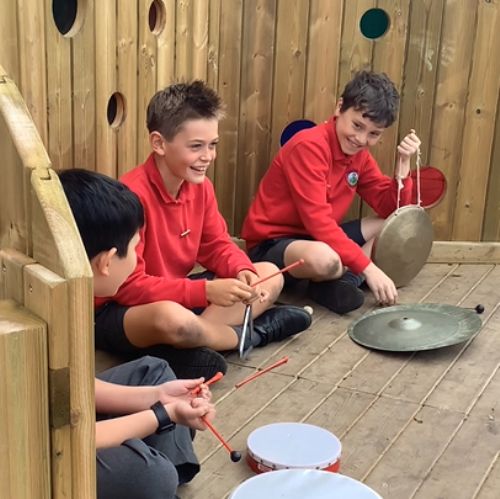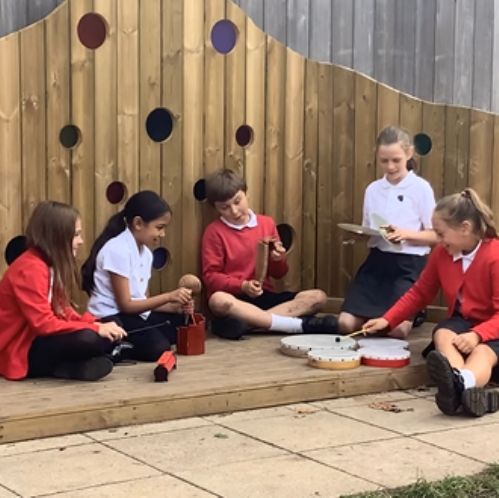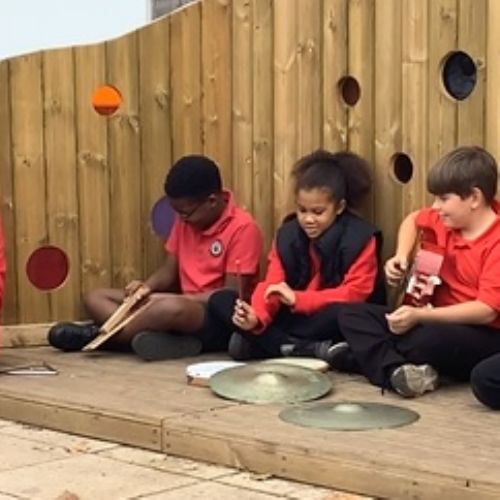
Coten End Primary School
Week beginning 29.09.25
Soundscapes
At the moment, the learning theme in Year 6 is Macbeth. We created our soundscapes based on the storm on the heath at the beginning of the play.
To make our soundscapes, we used a range of instruments to create the atmosphere of the storm. Some of the instruments we used included drums, maracas, and many more.
We chose our own groups and instruments. In my group, we started off quietly and gradually got louder. At one point, my friend acted as one of the witches and performed part of the Weird Sisters’ poem: “Double, double, toil and trouble; fire burn and cauldron bubble…” We even performed our soundscape on stage! Some other groups also sang the witches’ poem or added creepy cackles at the end.
Our group—and the rest of the class—really enjoyed creating soundscapes because we could use our imagination to think about what the storm might have sounded like. Would the mud be squelching under people’s feet? How loud would the rain be? Was there thunder? It was a really fun and creative activity that everyone enjoyed.
Lisa
It was simply wonderful to practice and perform the music soundscapes but I personally thought that just the experience of watching the other groups perform their interpretations of a storm and the ‘hubble bubble toil and trouble’ speech from Macbeth (we are doing it in english and I am really enjoying it ,mainly because I LOVE drama)my group was made out of Aggie (our time keeper, in a way) ,Rosie our drummer,Bethany who made the sound of rain and me (Ottilie)as our vocals ( I recited the speech then did a cackle at the end) all in all the day was so fun ,an absolute blast I also think that my class loved it as well since they all did such a wonderful job.
OTTILIE
A Day in the Life of a Tudor!
In our history lesson this week, Year 6 stepped back in time to experience life in Tudor England! We acted out the roles of rich and poor Tudor families and quickly discovered just how different their lives were. The rich lived in grand houses with fine clothes, banquets of meat and sweet treats, and plenty of servants, while the poor worked long hours, often lived in small, smoky cottages, and ate simple meals of bread and pottage.
Using resources from our lesson, we compared the two lifestyles and reflected on how unfair life could be depending on your social class. Afterwards, we wrote diary entries in role — some of us as wealthy Tudor nobles enjoying the luxuries of court, and others as poor labourers or maids describing the struggles of daily life.
It was a fascinating lesson that helped us imagine what it might have felt like to live during Tudor times — whether rich or poor!




